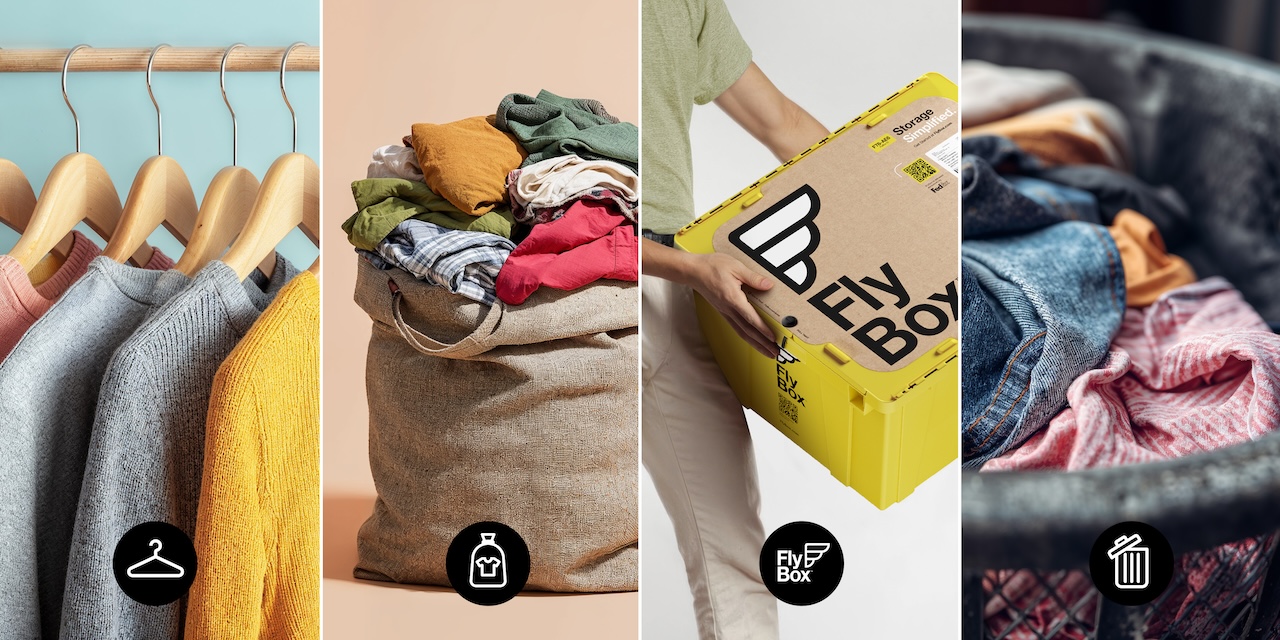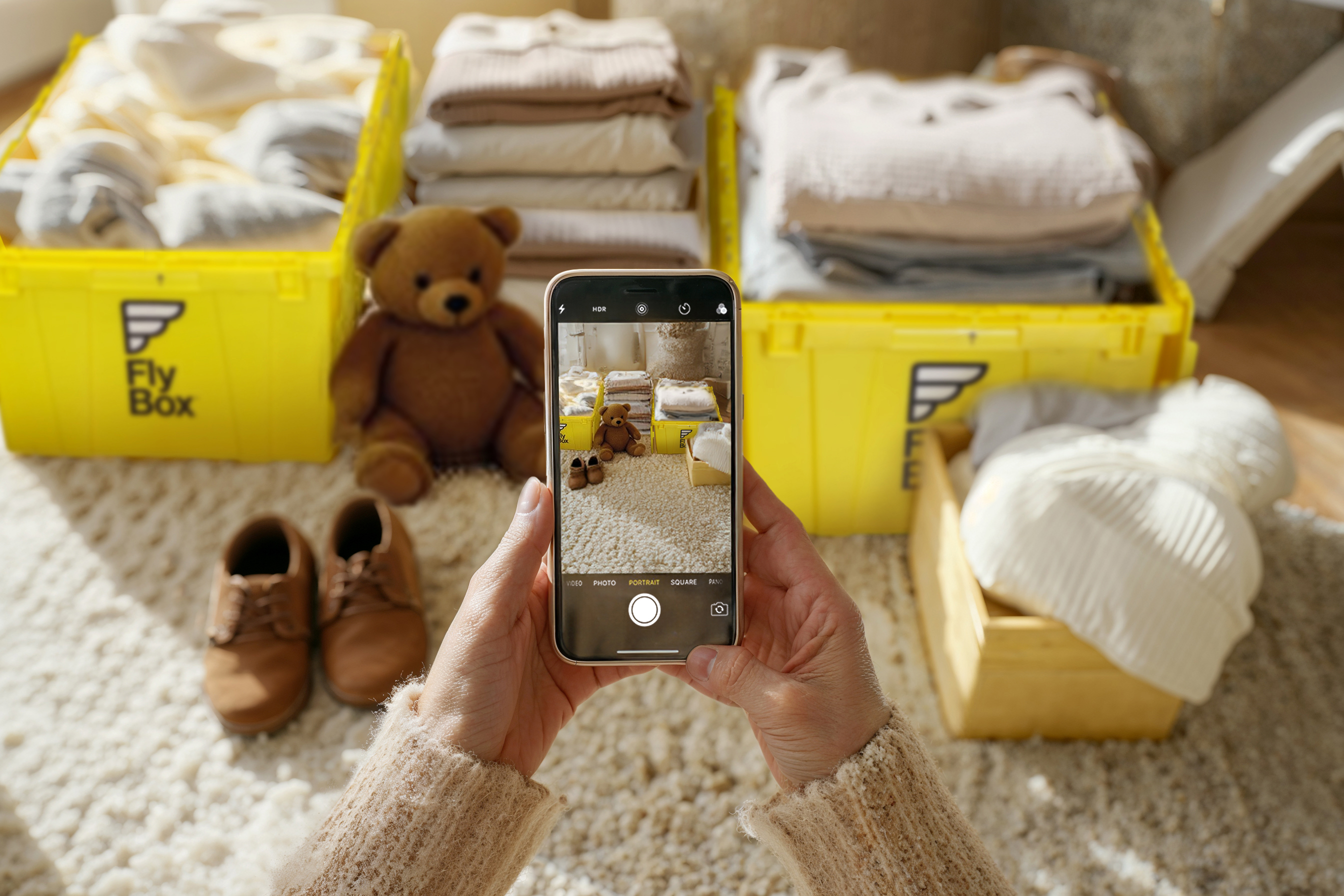Tips to Declutter Your Home

If you’ve ever tried to declutter your home and felt totally overwhelmed, you’re not alone. This checklist breaks the process down into room-by-room, totally doable steps. We’ll help you decide what to keep, what to let go of, and where to put the rest without getting stuck or stressed.
Why Decluttering Your Home Matters
When your home feels cluttered, it can quietly drain your energy and affect how you move through your day. Visual distractions pile up, decision fatigue creeps in, and even simple routines start to feel harder than they should.
Creating a cleaner, more organized space can have a powerful impact on your mindset. It becomes easier to focus, relax, and feel a sense of calm in your environment. If you're working toward buying a home, it can also help you build habits that support your long-term goals and make the transition smoother when the time comes.
Decluttering isn’t just about tidying up. It’s a chance to take control of your space and make room for the life you actually want to live.
How to Declutter and Organize Your Home
Decluttering doesn’t have to mean turning your entire house upside down in a single weekend. The most effective approach is to start small and focus on one area at a time. That could mean a single drawer, a shelf, or even just a corner of a room. Setting a timer for 20 or 30 minutes can help create structure and keep things manageable.
A helpful way to stay focused is by sorting items into four clear categories: keep, donate, store, or toss. If you’re unsure about something, ask yourself whether you use it, whether it serves a purpose, or whether it holds real value for your life right now.
You might come across things that matter to you but don’t really belong in your everyday space including sentimental items, seasonal gear, or anything you’re just not ready to let go of. This is where FlyBox becomes especially useful. You can pack these items into FlyBoxes, label and log them in the app, and store them safely offsite. It’s a simple way to keep what matters without letting it take over your home.
Creating and Using a Decluttering Checklist
Having a checklist can make a big difference when you’re trying to get organized. It turns a vague goal into something you can actually follow through on. Instead of wondering where to start, you’ve got a plan you can trust and small steps you can check off one by one.
Start by listing out the key areas of your home, kitchen, bedroom, bathroom, closets, storage spaces, and break each one down into tasks that take 10 to 30 minutes. For example, “clean out the spice rack” or “sort the bottom bathroom drawer.” The goal is to avoid the overwhelm that comes with trying to do too much at once.
Some people like to work room by room, others by category. Whichever you choose, keep the checklist visible, and don’t worry about finishing it all in a day. If it helps, print it out and keep it in the fridge or in a drawer you open often. You can also add a reminder on your phone once a week to revisit it and see what’s next.
Tips to Declutter Your Home by Room
Breaking decluttering into specific areas can make the process feel far less intimidating. Instead of trying to tackle your entire home at once, focus on one space at a time and look for quick wins that build momentum.
Kitchen
Start with the visible surfaces. Clear off your kitchen counters and put away anything that doesn’t get used daily. Next, open each cabinet or drawer and check for expired items, especially in your pantry and spice rack. Look through your plates and bowls; if you’ve got more than you need, set a few aside to donate or store. Group similar items together so it’s easier to see what you use and what’s just taking up space.
Living Room
This is often the heart of the home, which means it also attracts clutter. Straighten up coffee tables, sort through old magazines or books, and pare down extra throw pillows or blankets. Look at your electronics, remote controls, and cords, consider adding a simple tray or box to keep them in one place.
Bedroom and Closets
Sort your clothes by season, and if you haven’t worn something in over a year, ask yourself why. Some items might be ready to donate, while others, like occasion wear or sentimental pieces, can be stored in a FlyBox until you want them again. Use baskets or boxes inside your drawers to create structure and reduce visual clutter.
Bathroom
Check the expiration dates on medicine, skincare, and makeup. It’s easy to forget how long those items have been sitting there. Cut back on duplicates and toss what you don’t use. Group everyday items together so your routine stays simple and uncluttered.
Garage or Utility Space
This is where things often accumulate without a clear system. Sort items by category, tools, sports gear, seasonal decor, and decide what can be donated, tossed, or stored. Bulky or rarely used items are ideal candidates for FlyBox. Offsite storage can free up a surprising amount of space, especially in small homes.
Common Decluttering Mistakes to Avoid
Even with the best intentions, it’s easy to fall into habits that slow down your progress or make decluttering more frustrating than it needs to be. Here are a few common mistakes to watch out for and what to do instead.
Trying to do everything at once
Tackling your entire home in a single weekend sounds productive, but it often leads to burnout. Focus on small areas, pace yourself, and celebrate each finished section.
Buying storage too early
It’s tempting to start with a trip to the store for bins and baskets, but organizing clutter before you’ve edited it only masks the problem. Declutter first, then decide what type of storage actually makes sense.
Getting stuck on sentimental items
Nostalgia is real, and it’s normal to struggle with letting go of certain things. Instead of forcing yourself to decide right away, set those items aside and revisit them later. Or pack them into a FlyBox and store them safely so they’re out of sight but not out of your life.
Decluttering other people’s stuff
It can be frustrating to share a space with someone who isn’t on the same page. But going through a family member’s things without their permission can lead to tension. Instead, lead by example and share your own progress. When they’re ready, offer to help.
Decluttering without a plan
Going in without a checklist can leave you spinning your wheels. Whether it’s a printable checklist or a few notes in your phone, having a plan helps you stay on track and avoid decision fatigue.
Maintaining a Clutter-Free Home Long-Term
Decluttering is a habit, not a one-time project. Once you’ve cleared out the excess, staying organized becomes a lot easier, especially when you have a system that works for your space and your lifestyle.
Build small habits that support the changes you’ve made. Tidy up for five minutes each evening, set a reminder once a month to clear out a drawer or two, and keep a running donation list in your phone. Try to stay mindful about what you bring into your home, and if something new comes in, consider what can be stored or removed to make room.
When you come across items you don’t use daily but still want to keep like seasonal decorations, extra linens, or sentimental pieces, FlyBox helps you keep them organized and out of the way. You can log each item in the app, know exactly where it is, and request it back whenever you need it. It’s a seamless way to maintain a clutter-free space without losing track of what matters.
Storage Solutions to Keep Your Home Organized with FlyBox
Some things don’t belong in your everyday space, but that doesn’t mean they don’t have value. Maybe it’s a box of childhood keepsakes, off-season clothes, or the gear you only use for one weekend a year. Instead of stuffing them into a closet or leaving them scattered around your garage, give them a proper home with FlyBox.
FlyBox offers a simple way to store the items you want to keep without letting them take over your living space. You can:
- Pack your stuff into FlyBoxes
- Use the app to log what’s inside each one
- Store them securely in our climate-controlled storage facilities
- Request them back whenever you need them
It’s like adding a customizable storage unit to your home without giving up any actual square footage.
If you’re in the middle of your decluttering journey and need a flexible way to hold onto certain items, FlyBox gives you control, clarity, and breathing room. It’s one more way to turn your checklist into lasting change.


